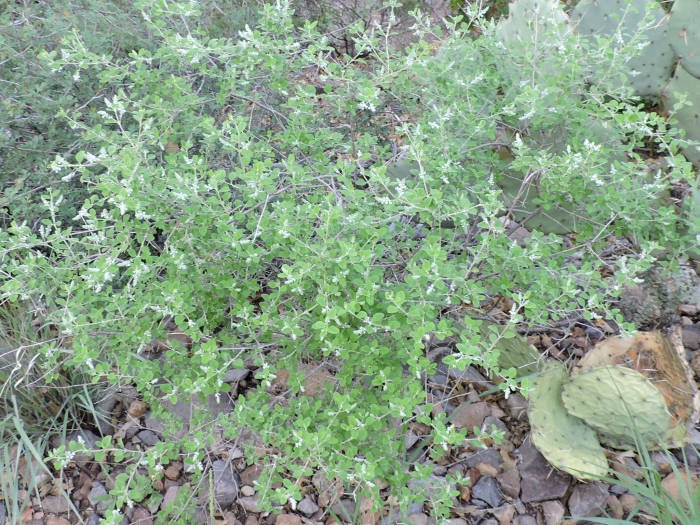Wright’s Beebrush
(Aloysia wrightii)
Wright’s Beebrush (Aloysia wrightii)
/
/

Sam Kieschnick
CC BY 4.0
Image By:
Sam Kieschnick
Recorded By:
Copyright:
CC BY 4.0
Copyright Notice:
Photo by: Sam Kieschnick | License Type: CC BY 4.0 | License URL: http://creativecommons.org/licenses/by/4.0/ | Rights Holder: Sam Kieschnick | Publisher: iNaturalist | Date Created: 2016-08-25T04:23:22-07:00 |





















































Estimated Native Range
Summary
Aloysia wrightii, commonly known as Wright’s Beebrush, is a deciduous shrub native to the arid deserts and semi-arid grasslands of the Southwestern USA and Northwestern Mexico. This plant is adapted to hot, dry climates and is often found in open areas where it can receive ample sunlight. Wright’s Beebrush typically reaches a height of nearly two meters and has a rounded form. Its small, oval-shaped to nearly round leaves are no more than two centimeters long, with lightly toothed edges and hairy undersides that help reduce water loss. The inflorescence consists of a narrow, woolly spike up to 6 centimeters long, adorned with small, widely spaced white flowers that bloom from late spring to early fall. The flowers are highly attractive to pollinators and provide a valuable nectar source for native solitary bees.
Wright’s Beebrush is appreciated for its drought tolerance and the ecological role it plays as a food source for the rustic sphinx moth (Manduca rustica). It is suitable for xeriscaping, wildlife gardens, and as an informal hedge or screen in areas with low water availability. In cultivation, it thrives in full sun to part shade and requires minimal water once established, making it an excellent choice for low-maintenance landscapes. It prefers well-drained soils and can tolerate a range of soil types, from sandy to loamy. While it is generally pest-free, it can be susceptible to root rot if overwatered or planted in poorly drained soils.CC BY-SA 4.0
Wright’s Beebrush is appreciated for its drought tolerance and the ecological role it plays as a food source for the rustic sphinx moth (Manduca rustica). It is suitable for xeriscaping, wildlife gardens, and as an informal hedge or screen in areas with low water availability. In cultivation, it thrives in full sun to part shade and requires minimal water once established, making it an excellent choice for low-maintenance landscapes. It prefers well-drained soils and can tolerate a range of soil types, from sandy to loamy. While it is generally pest-free, it can be susceptible to root rot if overwatered or planted in poorly drained soils.CC BY-SA 4.0
Plant Description
- Plant Type: Shrub
- Height: 4-6 feet
- Width: 4-6 feet
- Growth Rate: Moderate
- Flower Color: White
- Flowering Season: Spring, Fall
- Leaf Retention: Deciduous
Growth Requirements
- Sun: Full Sun, Part Shade
- Water: Low
- Drainage: Medium, Fast
Common Uses
Bee Garden, Butterfly Garden, Fragrant, Low Maintenance
Natural Habitat
Native to arid deserts and semi-arid grasslands of the Southwestern USA and Northwestern Mexico
Other Names
Common Names: Oreganillo, Wright’s Aloysia, Wright’s Lippia, Lemon Verbena, Mintbush Lippia
Scientific Names: , Aloysia wrightii, Lippia wrightii,
GBIF Accepted Name: Aloysia wrightii A.Heller